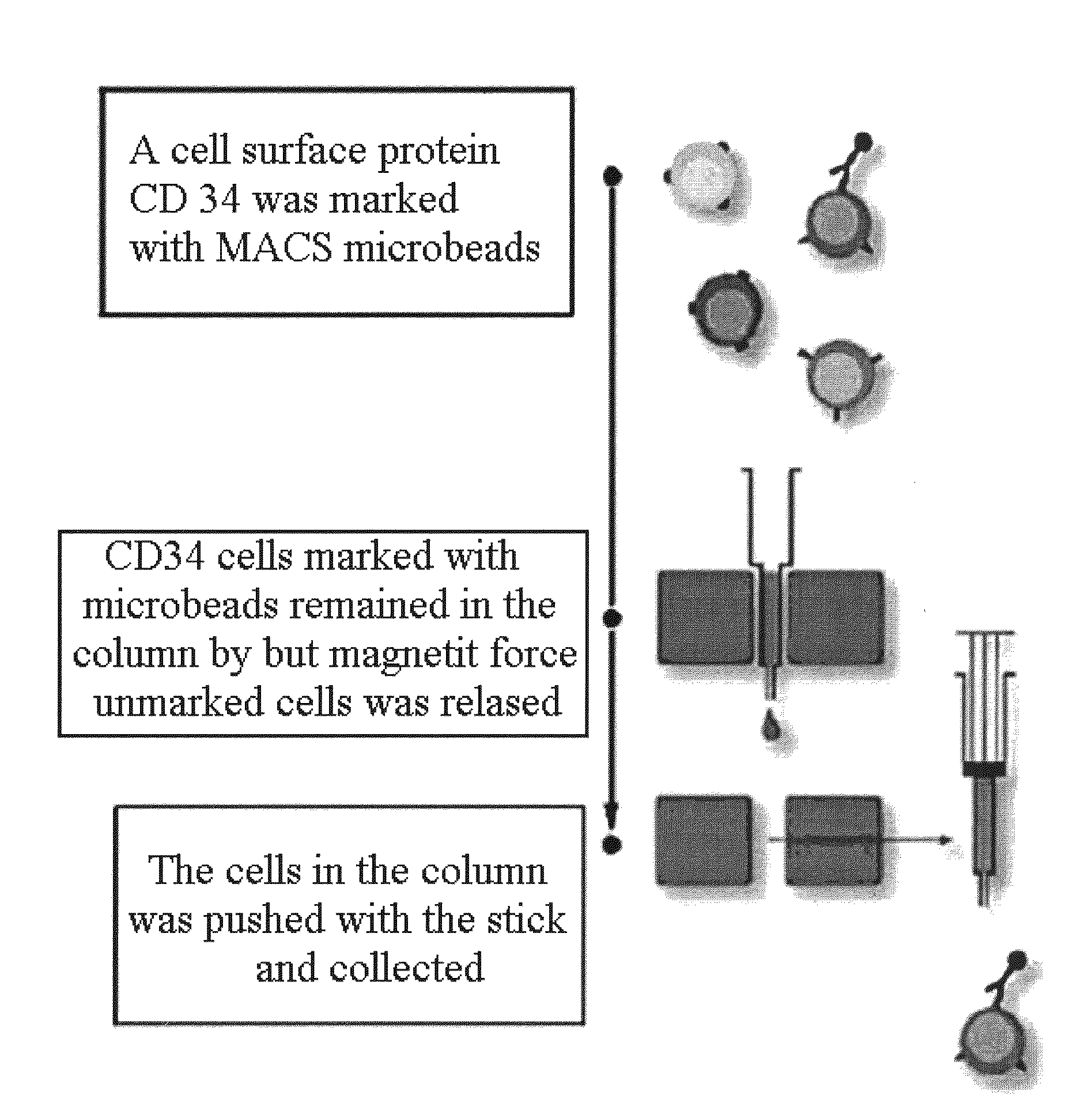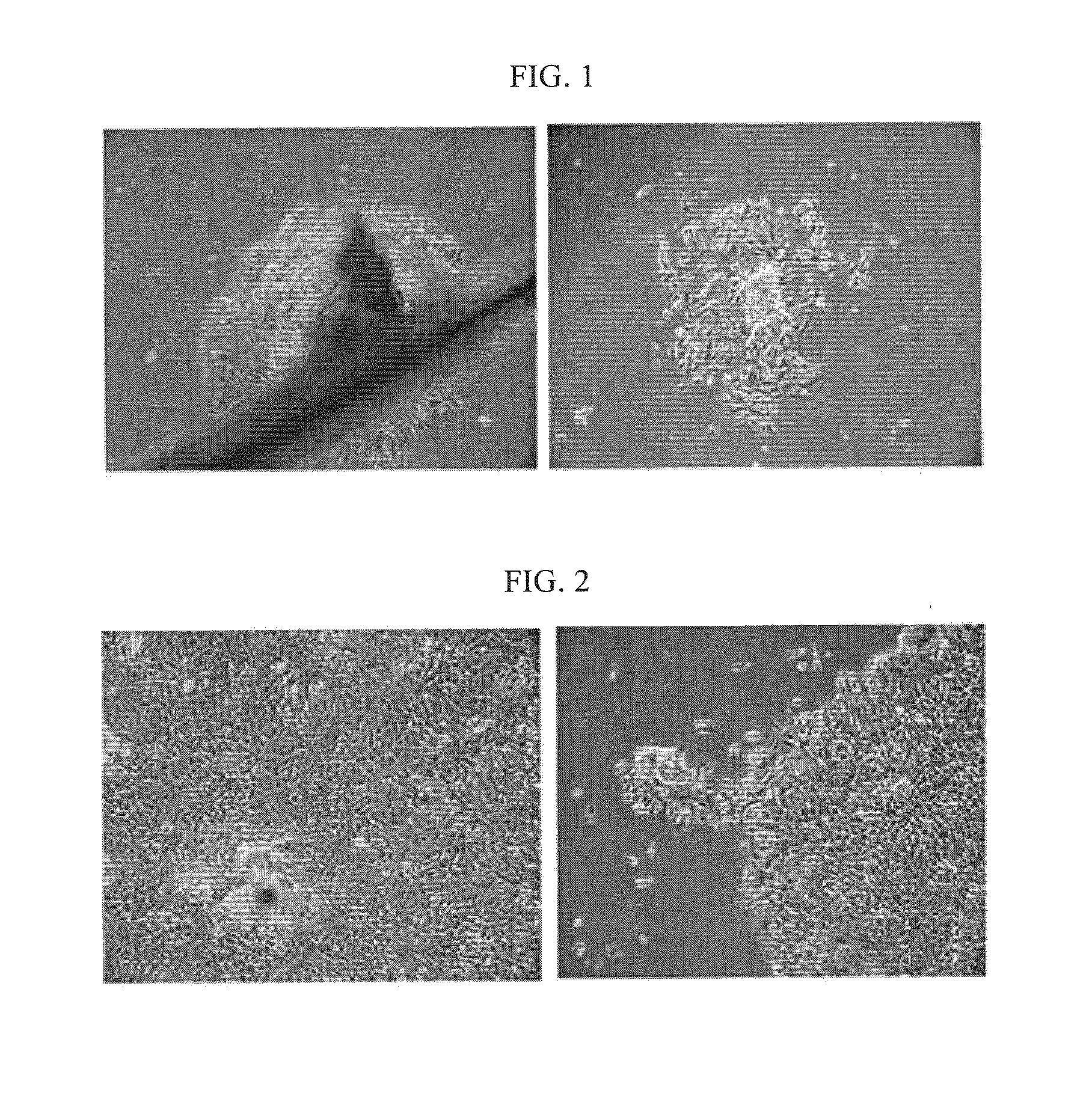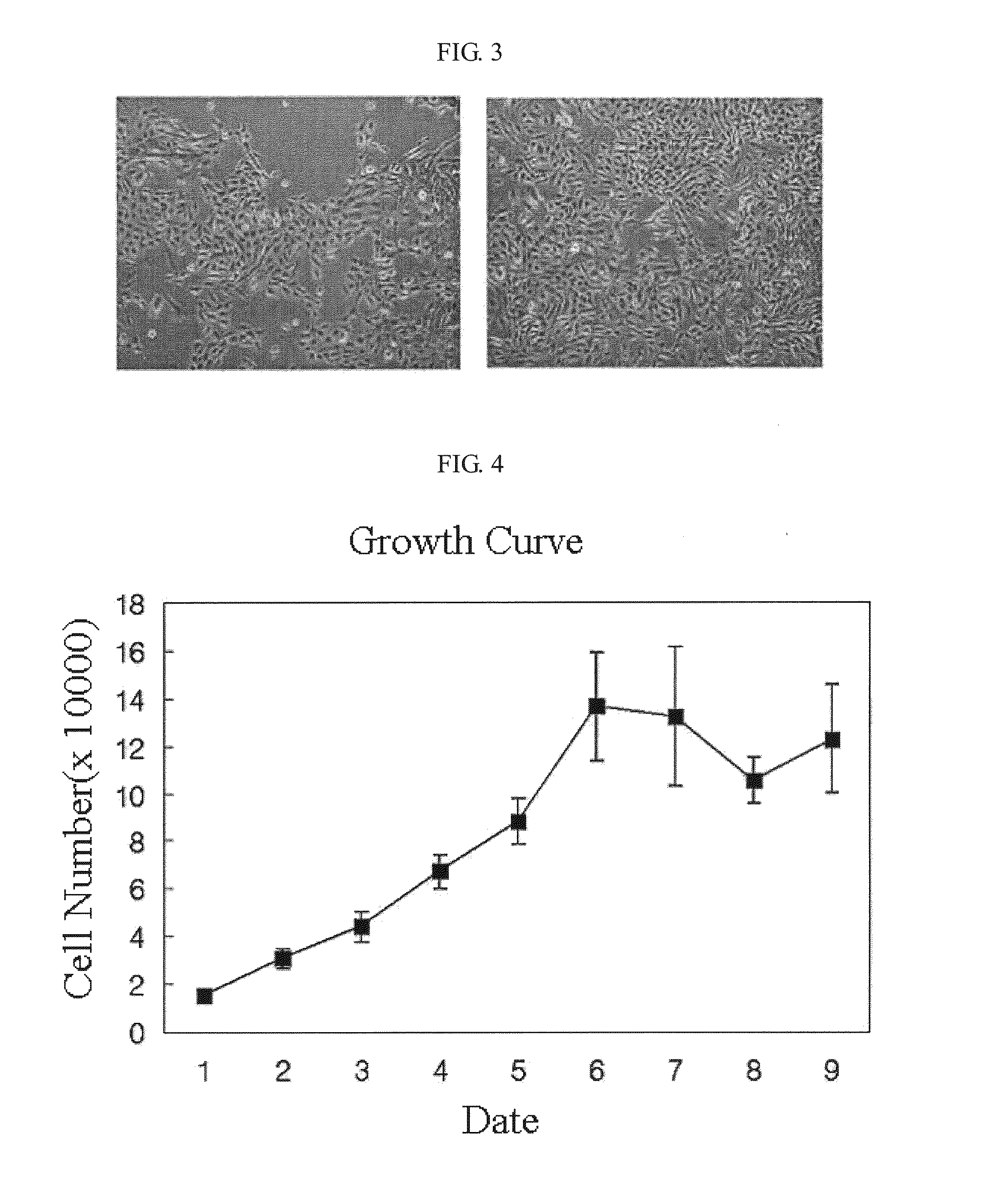Method For Isolation of a Hair Follicle Stem Cell and a Composition For Hair Reproduction
a technology of applied in the field of isolating hair follicle stem cells and compositions for inducing hair growth, can solve the problems of loss of more than 100 hairs, drug side effects, and a lot of transplanted hair
- Summary
- Abstract
- Description
- Claims
- Application Information
AI Technical Summary
Benefits of technology
Problems solved by technology
Method used
Image
Examples
example 1
Isolation of Hair Follicle Stem Cells
(1) Culture of Scalp Cells
[0047]From scalp including subcutaneous tissue, collected from the back of the head of a surgical hair transplant patient, scalp tissue remaining after surgical transplantation was obtained. The obtained hair follicle-containing scalp was placed in a DMEM medium containing 10 vol % of 0.1 ml / ml of fetal bovine serum, 100 μg / ml of normocin, 100 units of penicillin, 0.1 mg / ml of streptomycin and 0.25 μg / ml of neomycin. The scalp was taken out using sterilized forceps, placed in a Petri dish and cut into fine pieces using a blade inserted into a scalpel. The cut tissue was added to a DMEM medium containing 0.1 ml / ml (10 vol %) of fetal bovine serum, 100 units of penicillin, 0.1 mg / ml of streptomycin, 0.25 μg / ml of neomycin, 100 μg / ml of normocin, added with 2 vol % (0.02 ml / ml) of accumax (Chemicon cat# SCR006) and 0.4 mg / ml of dispase, in a Petri dish, and was transferred into a flask. The tissue contained in the flask was...
example 2
Immunological Characteristics of Hair Follicle Stem Cells
[0061]In order to examine the immunological characteristics of the CD34-positive cells isolated according to the above-described isolation method, FACS (fluorescence activated cell sorting) analysis was carried out, and the analysis results are shown in FIG. 7. Antigens analyzed for immunophenotype in this Example showed one or more immunological characteristics selected from among CD34 positivity (B), CD44 positivity (C), CD45 positivity (D), CD133 positivity (E) and CD29 positivity (F). 1×105 cells, identified in the section 3) of Example 1, were washed with a 2% FBS-containing PBS solution and allowed to react with antibodies to each of the antigens at room temperature. Whether the antigens were expressed was analyzed using a flow cytometer.
[0062]The analysis results are shown in FIG. 7. As can be seen in FIG. 7, the human hair follicle stem cells of the present invention showed positive responses of more than 90% to CD34(B...
example 3
Effects After Administration of Composition Containing Hair Follicle Stem Cells as an Active Ingredient
(1) Administration of Hair Follicle Stem Cells and Observation in Mice
[0063]A syringe containing 1×105 CD34-positive cells transferred therein was placed on ice, and then the cells were administered into nude mice by subcutaneous injection. As a control group, animals without the cells administration were photographed for comparison with the state of mice with the cells administration. The animals used in the test were as follows:[0064](1) animal species: BALB / cAnNCrjBgi-nu mice[0065](2) sex and age when purchased: female and 6 week-old[0066](3) purchased from: Orient Bio Inc., Korea[0067](4) number of animals purchased: 25 females[0068](5) inspection and acclimation period: the animals were acclimated in our laboratory for about 1 week, during which general conditions of the animals were observed, and only healthy animals were provided in test.[0069](6) number of animals used: 20 ...
PUM
| Property | Measurement | Unit |
|---|---|---|
| vol % | aaaaa | aaaaa |
| time | aaaaa | aaaaa |
| culture time | aaaaa | aaaaa |
Abstract
Description
Claims
Application Information
 Login to View More
Login to View More - R&D
- Intellectual Property
- Life Sciences
- Materials
- Tech Scout
- Unparalleled Data Quality
- Higher Quality Content
- 60% Fewer Hallucinations
Browse by: Latest US Patents, China's latest patents, Technical Efficacy Thesaurus, Application Domain, Technology Topic, Popular Technical Reports.
© 2025 PatSnap. All rights reserved.Legal|Privacy policy|Modern Slavery Act Transparency Statement|Sitemap|About US| Contact US: help@patsnap.com



